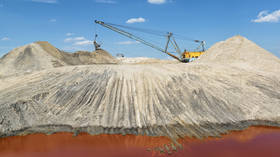Inside Fukushima: Eerie nuclear ghost towns 5yrs after tsunami disaster (PHOTOS, VIDEOS)

Five years after Japan’s Fukushima prefecture was devastated by a massive earthquake and 10ft-high tsunami, workers are continuing to clean the wasteland in the hope that the area’s 120,000 evacuated residents will one day return home.
Photographs from inside the less radioactive zones, where decontamination work is being carried out by 20,000 workers, demonstrate the colossal scale of the task still facing them.
READ MORE:Bad news for bots: Fukushima cleanup robots overpowered by radiation (VIDEOS)
But a look into the ghost towns which are still too dangerous for clearing and restoring, shows schools, supermarkets, and streets left destitute by the nuclear plant that forced the evacuation of more than 160,000 locals, of whom some 120,000 are still living in temporary accommodation.
A small number of residents defied the evacuation orders and refused to leave the area, despite the health risks.
This series of maps demonstrates the initial emergency response and the subsequent spread of evacuation orders as the extent of the disaster became clearer:

Photographer Arkadiusz Podniesinski visited the site in September 2015 to document the abandoned remnants of normal life in the region as well the determination of those who have returned - or stayed behind.
The photographer, who had visited the Chernobyl disaster area for the first time in 2008, said that "it is not earthquakes or tsunami that are to blame for the disaster at the Fukushima Daiichi nuclear power station, but humans".
Click on the following images taken by Podniesinski to flip the pictures for more information on each scene.













